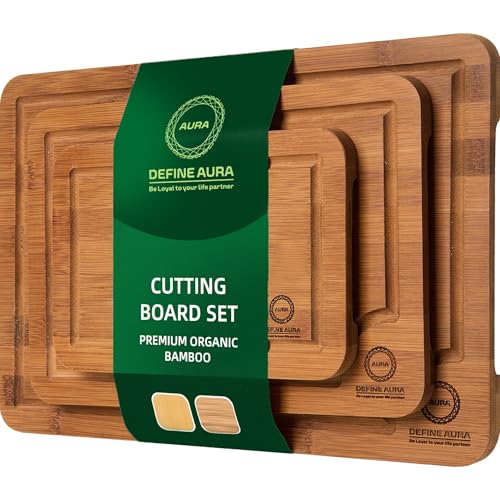If you have a bamboo cutting board at home, and you first cut garlic on it and then cut strawberries, I must tell you that things will get very strange. As we all know, after using strong-smelling vegetables like garlic on bamboo cutting boards, which retain odors for a long time, it’s necessary to clean them thoroughly. Your work might be rushed, your guests might have informed you last minute, and you might have to cook urgently. These are acceptable reasons.
However, this situation unfortunately cannot prevent the smell of strong-smelling vegetables like garlic from transferring to the next vegetables and fruits. This situation ensures that strong-smelling vegetables (or other foods with dominant odors) transfer to other foods via the bamboo cutting board, which means unpleasant smells and tastes. This also applies to stains. That’s when the whole “how to sanitize bamboo cutting board” thing stops being just something nice to know and becomes a necessary obligation.
What I Used To do, What I Do Now
When I encountered such a situation in the past, the first thing I would do was just rinse it with hot water. I thought this was the “best solution.” But after too many bamboo cutting boards got that strange smell (you know the one a bit like damp wood and onion soup had a baby), I decided it was time to step up my game.
Tips:
You can clean and sanitize your bamboo cutting board with an eco-friendly method without the need for harsh chemicals or fancy tools. For this, you need three simple things: a little white vinegar, baking soda, and a lemon. Don’t make it a big deal; it’s that simple. Almost like preparing a salad, right?
How I Sanitize The Bamboo Cutting Board
I sprinkle a little vinegar over the board (just enough to dampen the surface, not heavily), then I sprinkle a little baking soda on it. There’s this fizzy reaction that happens, which always makes me feel like something scientific is going on. Like I’m doing experiments with test tubes in class. Then, I let it sit for about five minutes maybe a little less then I take half a lemon and scrub the surface with it as if I’m polishing a trophy (don’t scrub too hard while doing this). The acidity helps get rid of all kinds of odors, and the citrus smell really adds a pleasant touch.
After that, I rinse it under lukewarm water (by the way, never soak it bamboo swells like cra-zy), and then I immediately dry it with a clean towel. No air-drying. That’s when warping begins.
Sometimes, after sanitizing, I oil the board just a little food-grade mineral oil, rubbed in with a soft cloth. It helps prevent the board from drying out or cracking, especially if you sanitize it often.
The whole process takes at most 10 minutes. And that peace of mind? Absolutely worth it. You’re not just cleaning you’re extending the life of your board and, honestly, saving yourself from those mysterious kitchen smells.
Oh, and one last thing don’t skip the lemon. It’s like the final touch that makes everything feel fresh. Seriously, try it.
read more: How to Sanitize Bamboo Cutting Boards Safely at Home











